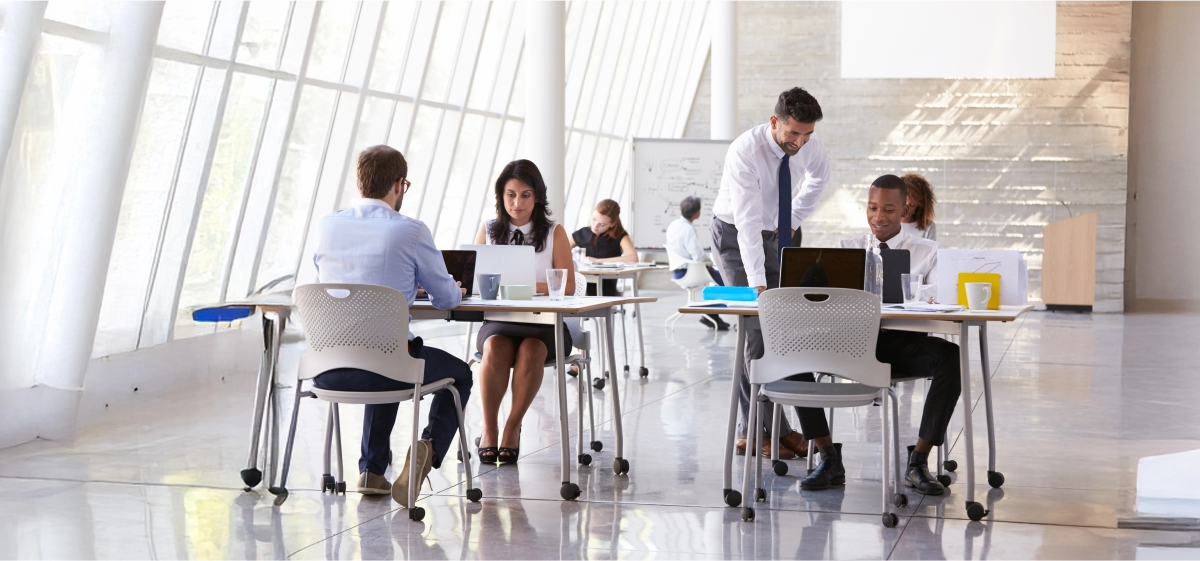Get Support
123-456-789-10
Future-Forward Commercial Spaces - Exploring the Latest Trends in Modern Work Environments
In an age where flexibility, sustainability and technology define the way we live and work, commercial spaces are undergoing a radical transformation. From smart offices powered by AI to biophilic designs that promote wellness, today’s work environments are more than just places to clock in and out, they are hubs of innovation, collaboration and culture.
The workplace has always gone transformation but recent years have brought a wave of unparalleled and accelerated change. The pace has been faster than ever before, from hybrid models to digital transformations. Employees and organizations alike are circumnavigating new norms, tools and expectations. Flexibility, adaptability and innovation have become essential for thriving in this dynamic environment. The pace has been faster than ever before, whether you are a developer, business owner, architect or tenant.
Understanding these budding trends is vital to stay ahead. Today's workspaces have evolved far beyond just aesthetics. Modern offices are being reimagined as lively ecosystems where design, technology, well-being and culture flawlessly unite to support productivity, innovation and employee satisfaction.
Let’s explore into the future-forward concepts that are reforming commercial real estate and redefining the modern workplace.
1. Hybrid-Ready Infrastructure
Office environments are being redesigned for ultimate flexibility, with remote and hybrid work becoming the norm. Flexible designs allow teams to effortlessly switch between solo tasks and collective sessions. Cohesive technology, comprising high-quality video conferencing systems, hot-desking tools and cloud access, ensures a consistent experience, whether in the office or online.
2. Smart & Sustainable Buildings
The modern workplace is not just intelligent, it’s environmentally conscious. IoT-enabled (Internet of things) systems monitor and optimize lighting, climate control and energy usage for maximum efficiency. Use of LEED-certified materials and sustainable design practices aligns with ESG goals and appeals to eco-conscious employees and stakeholders.
3. Wellness-Centric Designs
Employee well-being is now a key design priority, not a bonus. Biophilic elements like natural light, indoor greenery and open-air terraces create a calming, energizing atmosphere. Facilities such as fitness centres, meditation rooms, ergonomic workstations and health-focused cafes promote physical and mental wellness.
4. Tech-Infused Teamwork Zones
Innovation prospers in spaces that are built for interaction. Workplaces now feature interactive whiteboards, AR/VR tools and immersive brainstorming pods to support alert thinking. High-speed internet and cloud-based collaboration tools empower teams to co-create, irrespective of location.
5. Adaptive Use of Space
Today’s offices must be as agile as the people working in them. Spaces are designed to morph effortlessly from quiet focus zones to lively team huddle areas. Modular furniture, acoustic partitions, and mobile setups enable on-demand reconfiguration, making every square foot more productive.
6. Community & Culture-Focused Layouts
Workplaces are now extensions of brand and community values. Art installations, social lounges and thematic breakout zones embody organizational culture and create a sense of belonging. Inclusive design practices support neurodiversity, physical accessibility and cultural sensitivity fostering a workplace where everyone feels welcomed.
7. Location and Lifestyle Integration
Employees want more than just a desk; they want convenience and connection. Modern campuses now include retail outlets, cafes, wellness centres and entertainment zones to support work-life harmony. Proximity to public transport, urban hubs, and residential zones ensures easy access and reflects the evolving lifestyle needs of the workforce.
Conclusion
As work evolves, so too must the environments that support it. Future-forward commercial spaces aren’t just reacting to change but are anticipating it. Businesses that invest in these dynamic, human-centric environments will attract top talent, boost productivity and cultivate long-term success.
The future of work is experience-driven. Organizations that invest in thoughtful, future-ready work environments aren't just improving aesthetics; they are humanizing engagement, loyalty and long-term success. As the lines between work and life continue to blur, the modern workplace cannot just be a space; it needs to be a planned asset.





